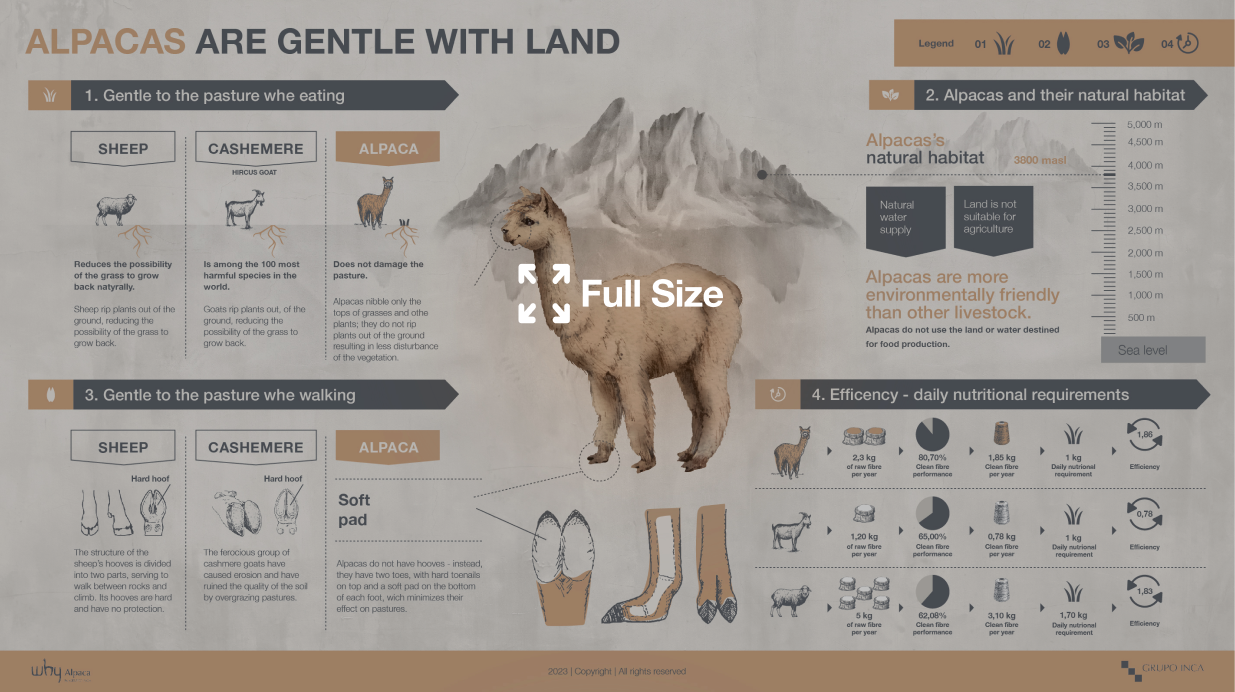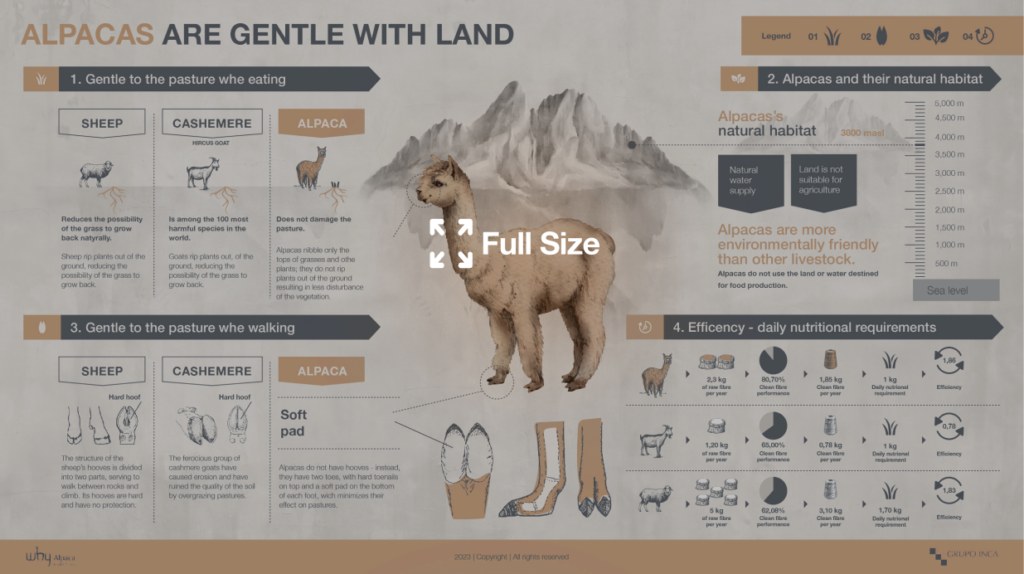Alpacas do not damage the pasture whe grazing
Alpacas nibble only the tops of grasses and plants; they do not rip plants out of the ground, resulting in less disturbance of the vegetation and allowing it to grow black.
Alpaca feet do not damage the pasture.
In contrast to goats and sheep, wicht have sharp hooves that damage pasture and soil, alpacas have two toes with toenails on top and soft pad on the bottom of each foot that minimizes their effect on pasture-land. In other words, the grass system is not disturbed by alpacas, allowing the soil and their habitat to remain intact.
Alpacas do not use the land or water destined for food production.
The natural habitat of alpacas is about 3.800 metres above sea level. At this altitude, the water supply is natural and the land is generally not suitable for agriculture. This makes alpacas more enviromentally friendly than all other fibre-producing livestock that often contribute significantly to serious environmental problems. Vegetable fibres also represent a problem for the environment. For example, in Australia, 2.830 litres of water are needed to produce 1 kg of cotton.
Alpacas are highly efficient animals.
The efficiency of alpacas is especially notable considering that they require much less food intake that most other fibre-producing livestock. Cashmere goats, for example, require at least two times the amount of dry grass that alpacas need to produce 1 kg of clean fibre.






